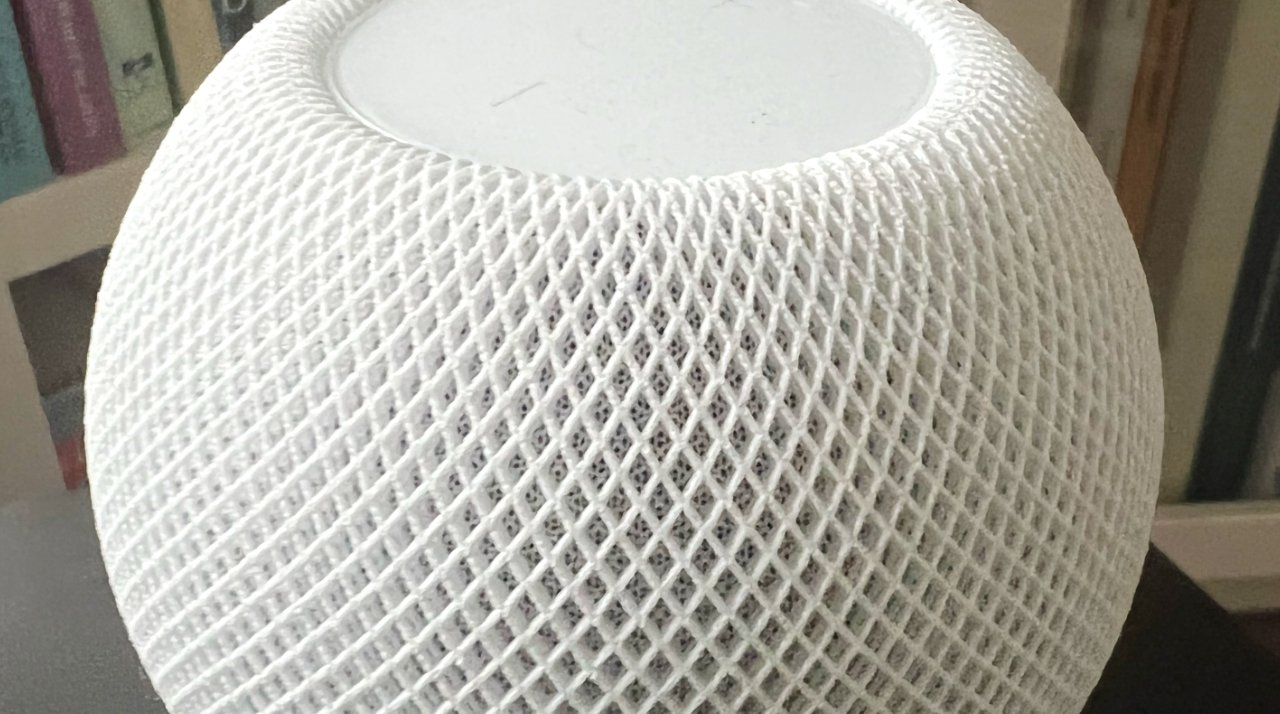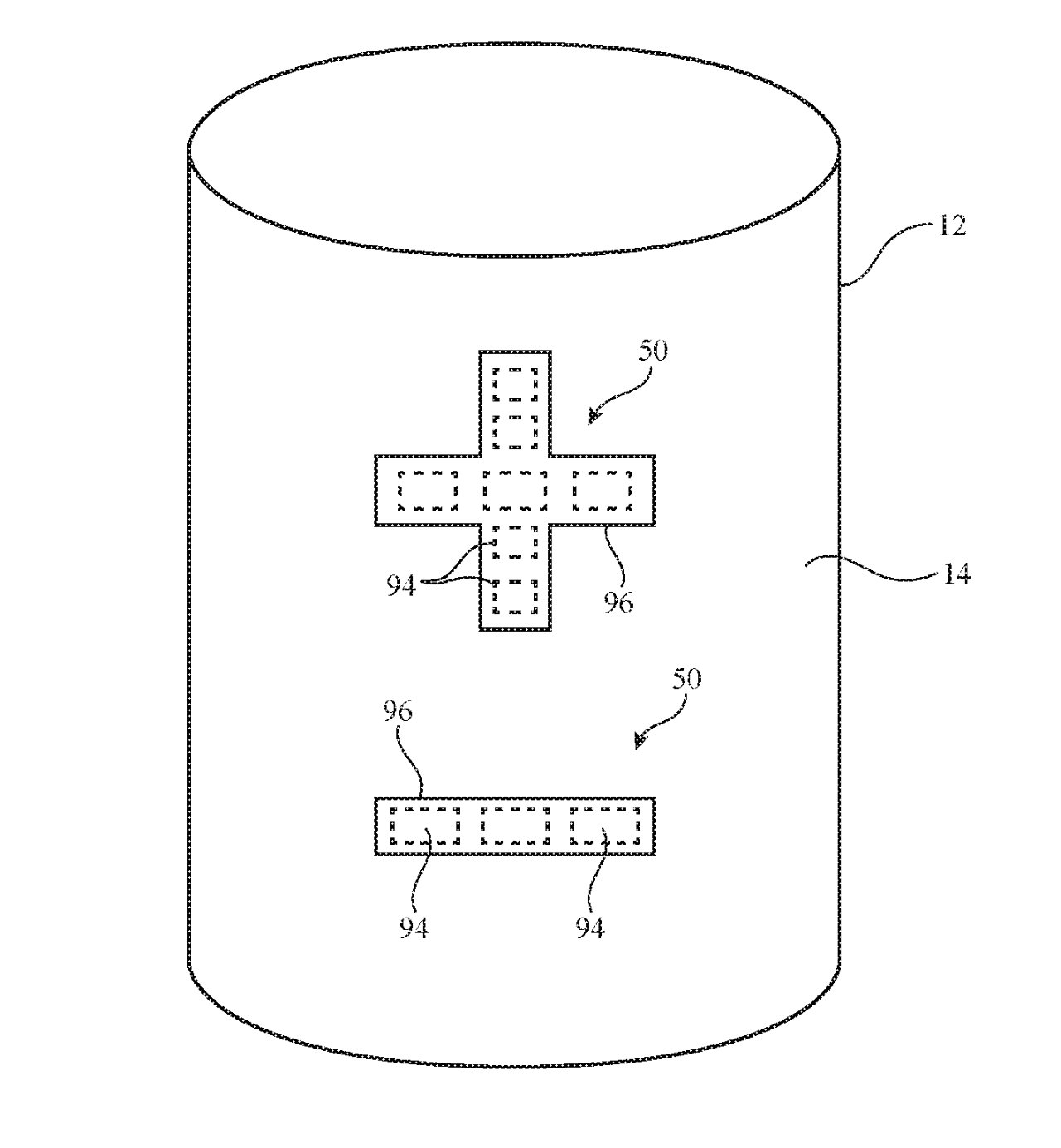HomePod could gain touch-sensitive fabric & more convenient controls
Apple is working on fabrics that can contain touch-sensitive materials, and display controls, so that the protective case around a future HomePod mini could feature extra functionality.

HomePod mini
The HomePod mini, like the original HomePod before it and perhaps future ones to come, have a touch-sensitive panel at the top. It's sensitive enough that it's faster to tap on that to pause playback than it is to ask Siri, but it's not the most convenient option if it's up on a shelf.
Apple has now been granted a patent that would see future speakers use at least a portion of fabric that can detect touch. So perhaps the entire acoustic wraparound shell of a HomePod mini would be replaced, or just key areas.
"Fabric-covered electronic device with touch sensor," is this newly-granted patent, and may even apply to other Apple devices. The Smart Folio keyboard, for instance, is a kind of fabric. However the patent concentrates on audio devices.
"Electronic devices such as audio devices may include fabric," it says. "As an example, the housing of a speaker may be covered with a layer of fabric. Openings may be provided in the fabric to allow sound to be emitted from within the device."
"[However, it] may be challenging to enhance the functionality of a speaker," continues the patent. "For example, it may be difficult to integrate input and output devices into a speaker with a fabric layer. If care is not taken, the user may find it cumbersome to provide input to and receive output from the speaker."

Detail from the patent showing controls
It is cumbersome now in that you have to reach over to the panel at the top, which may or not be all that accessible. Being able to tap on the side, or to slide your finger down the length of the speaker to change the volume, would be immediately better.
"A touch sensor may be used to detect touch input on the layer of fabric," says Apple. "The touch sensor may include capacitive touch sensor electrodes including drive lines and sense lines."
Drive lines and sense lines are seen in certain keyboard designs where one represents a horizontal path and one a vertical. When a key is pressed, or in this case a section of fabric is touched, it is registered at the intersection of the lines and so the device can accurately determine what the user meant to press.
"In some arrangements, the touch sensor is formed from conductive strands in the layer of fabric," continues Apple. "In other arrangements, the touch sensor is formed from conductive traces on a substrate."
The patent goes into detail about substrates, and also offers many "other arrangements" to cover every conceivable use of the touch-sensitive fabric. It also, though, spends some time on how a user can tell whether their press or touch has been registered.
They can certainly feel when they've touched the fabric, and if they're pausing a speaker then they can tell it's worked because the music stops. But more subtle changes like altering volume in small steps is harder to be immediately clear about.
Plus, although the HomePod mini is quite small, it still has a pretty substantial surface area so the user needs to know where the touchable part of the fabric is.
Apple proposes answering both of these issues with a display woven into the fabric.
"Light-emitting components and/or fabric with different visual characteristics may be used to mark where the touch-sensitive regions of the fabric are located," says Apple. "The touch-sensitive regions may be shaped as media control symbols."
Read on AppleInsider

HomePod mini
The HomePod mini, like the original HomePod before it and perhaps future ones to come, have a touch-sensitive panel at the top. It's sensitive enough that it's faster to tap on that to pause playback than it is to ask Siri, but it's not the most convenient option if it's up on a shelf.
Apple has now been granted a patent that would see future speakers use at least a portion of fabric that can detect touch. So perhaps the entire acoustic wraparound shell of a HomePod mini would be replaced, or just key areas.
"Fabric-covered electronic device with touch sensor," is this newly-granted patent, and may even apply to other Apple devices. The Smart Folio keyboard, for instance, is a kind of fabric. However the patent concentrates on audio devices.
"Electronic devices such as audio devices may include fabric," it says. "As an example, the housing of a speaker may be covered with a layer of fabric. Openings may be provided in the fabric to allow sound to be emitted from within the device."
"[However, it] may be challenging to enhance the functionality of a speaker," continues the patent. "For example, it may be difficult to integrate input and output devices into a speaker with a fabric layer. If care is not taken, the user may find it cumbersome to provide input to and receive output from the speaker."

Detail from the patent showing controls
It is cumbersome now in that you have to reach over to the panel at the top, which may or not be all that accessible. Being able to tap on the side, or to slide your finger down the length of the speaker to change the volume, would be immediately better.
"A touch sensor may be used to detect touch input on the layer of fabric," says Apple. "The touch sensor may include capacitive touch sensor electrodes including drive lines and sense lines."
Drive lines and sense lines are seen in certain keyboard designs where one represents a horizontal path and one a vertical. When a key is pressed, or in this case a section of fabric is touched, it is registered at the intersection of the lines and so the device can accurately determine what the user meant to press.
"In some arrangements, the touch sensor is formed from conductive strands in the layer of fabric," continues Apple. "In other arrangements, the touch sensor is formed from conductive traces on a substrate."
The patent goes into detail about substrates, and also offers many "other arrangements" to cover every conceivable use of the touch-sensitive fabric. It also, though, spends some time on how a user can tell whether their press or touch has been registered.
They can certainly feel when they've touched the fabric, and if they're pausing a speaker then they can tell it's worked because the music stops. But more subtle changes like altering volume in small steps is harder to be immediately clear about.
Plus, although the HomePod mini is quite small, it still has a pretty substantial surface area so the user needs to know where the touchable part of the fabric is.
Apple proposes answering both of these issues with a display woven into the fabric.
"Light-emitting components and/or fabric with different visual characteristics may be used to mark where the touch-sensitive regions of the fabric are located," says Apple. "The touch-sensitive regions may be shaped as media control symbols."
Read on AppleInsider

Comments
"Hey you~ Enjoying the party? This song rocks so hard. Btw, if you wanna make the music louder or skip tracks, just tweak these two little dials here on my shirt..."